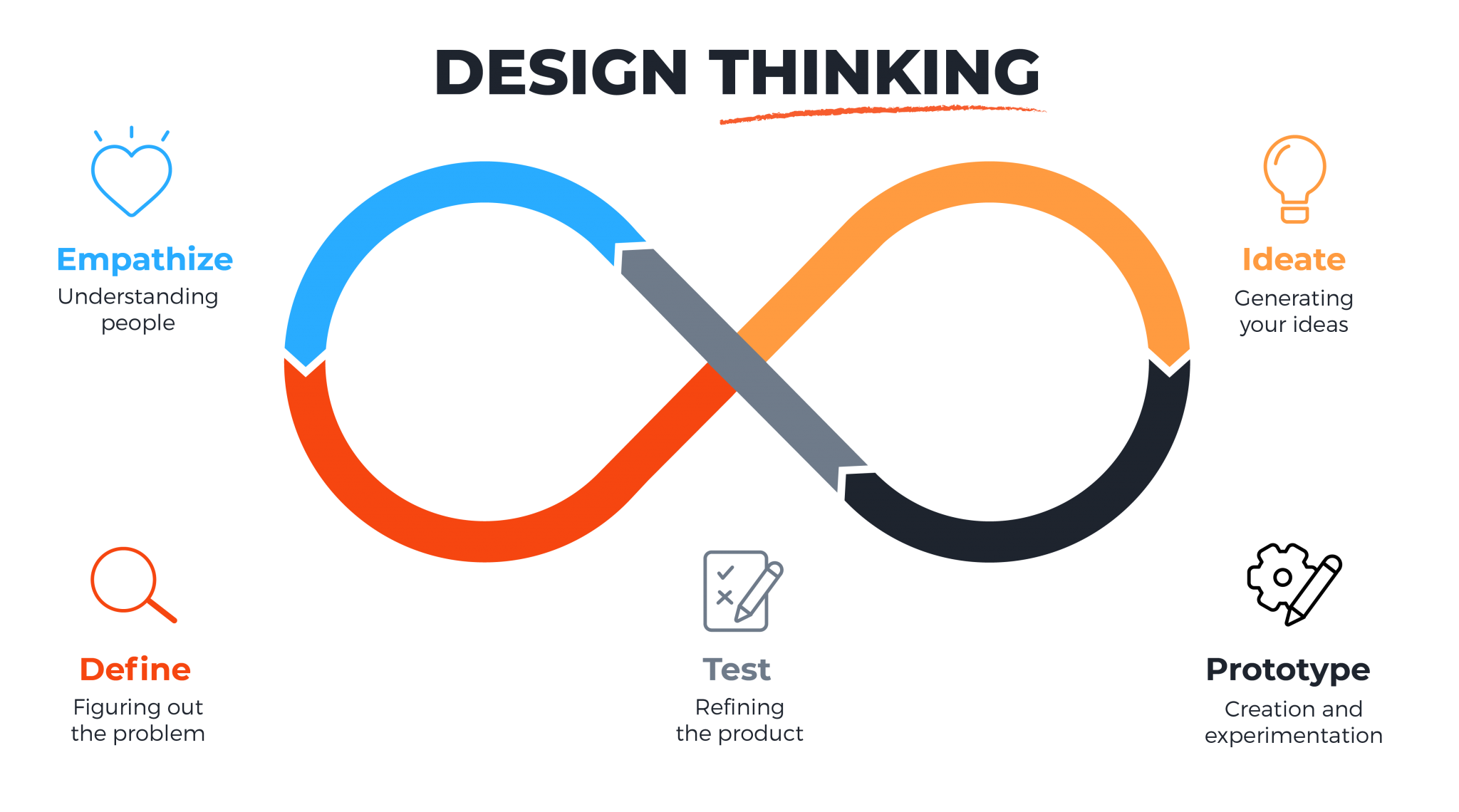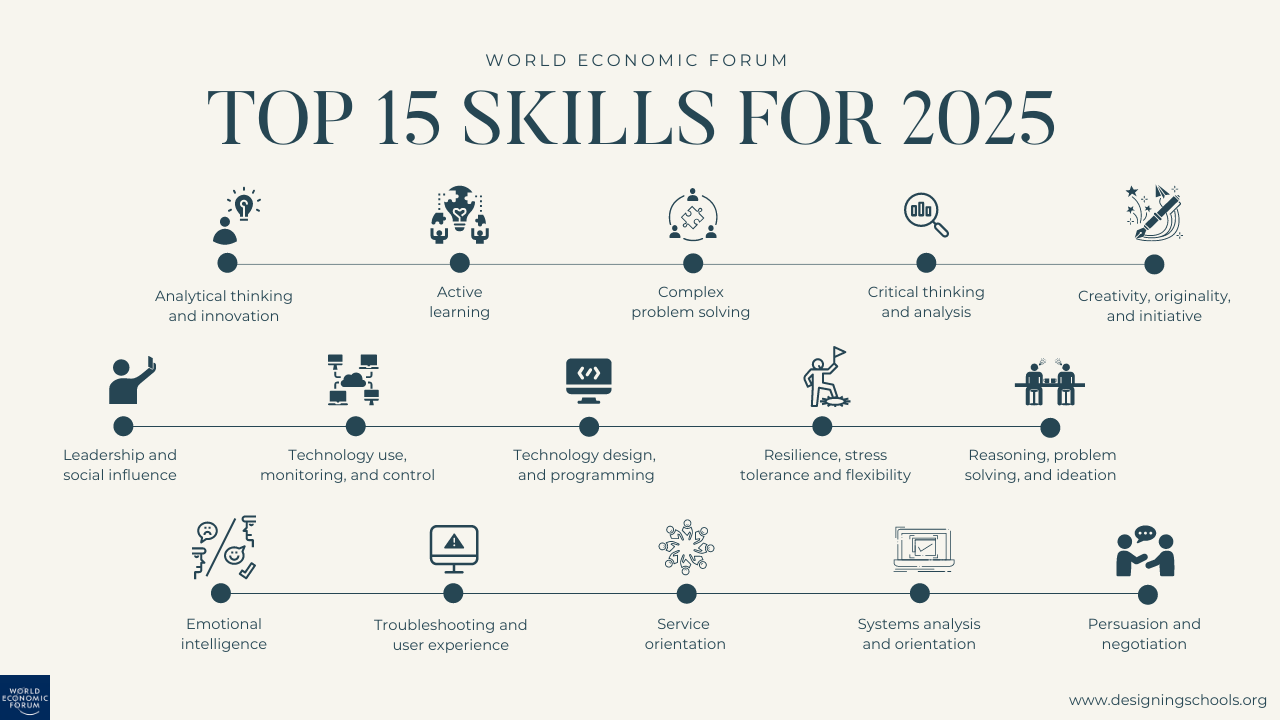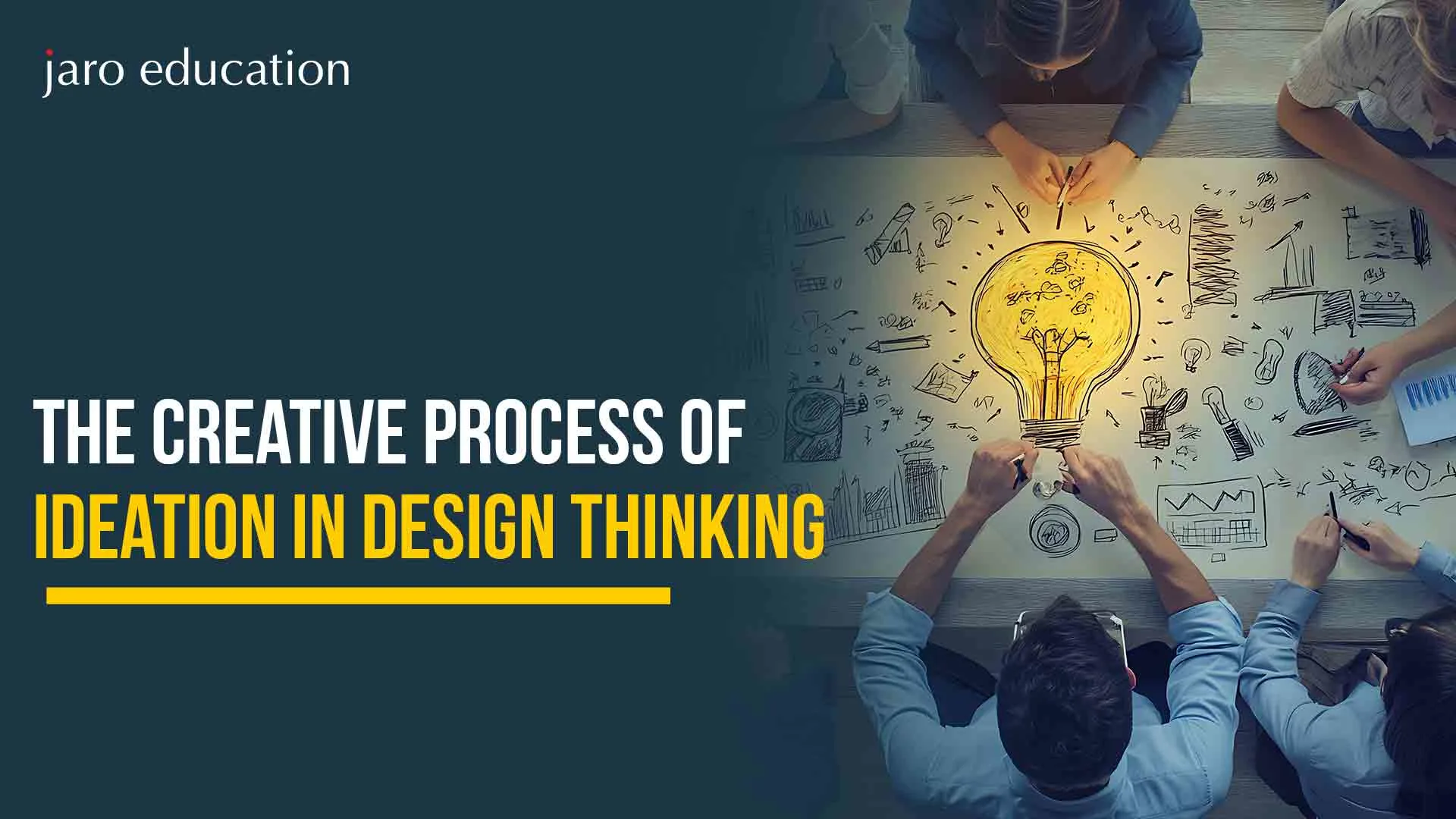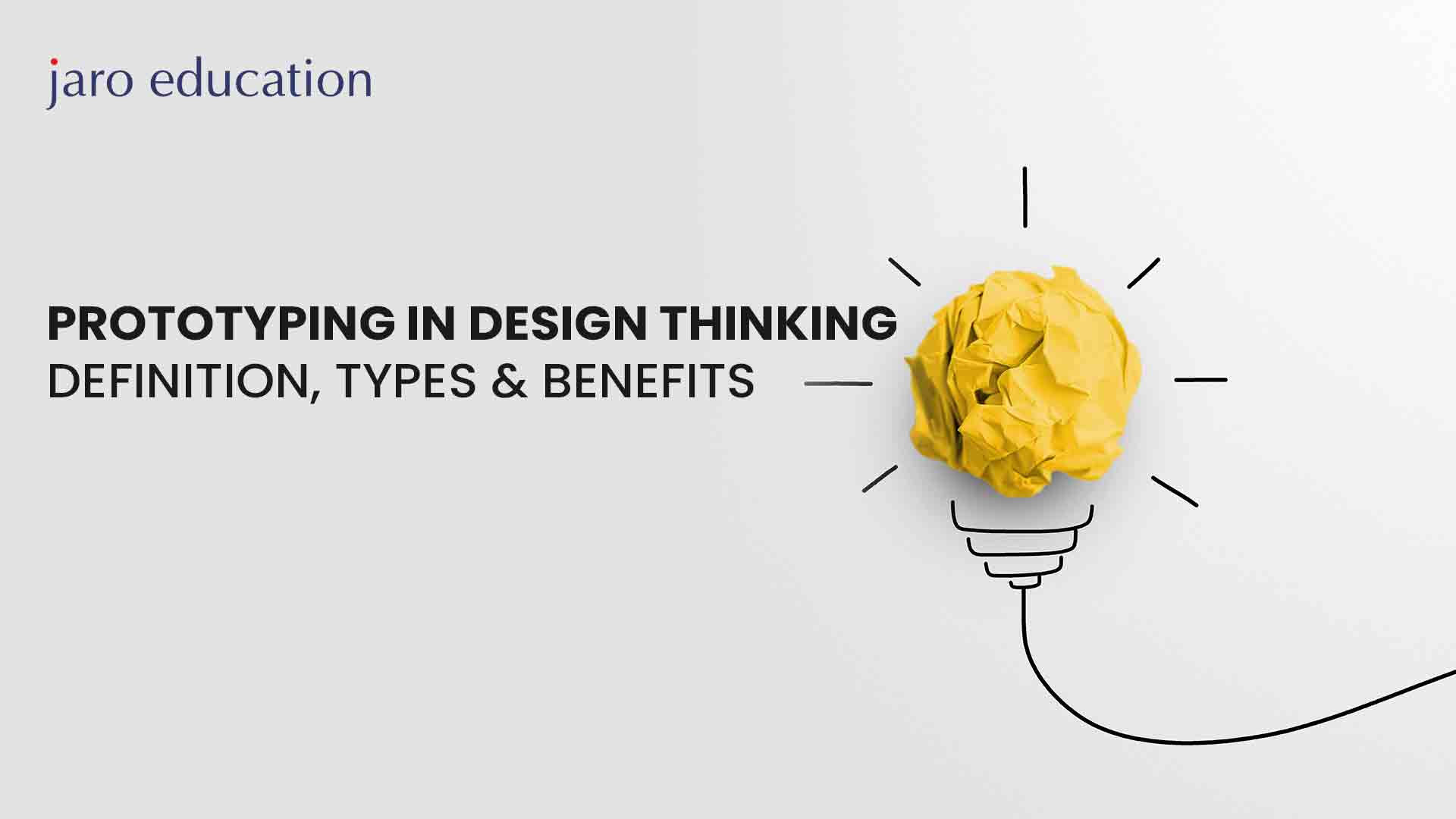5 Steps of the Design Thinking Process: A Step-by-Step Guide
Table of Contents

Tackling today’s toughest problems isn’t just about using fancy tools or sticking to a fixed set of steps. Real progress often happens when teams stop and ask a basic, powerful question: What does the other person actually need right now? That simple reflection sits at the core of what the design thinking process is all about.
Unlike methods that charge ahead based on assumptions, this approach is more restrained. It stimulates the idea of examining another person’s perspective, experimenting with new concepts, and demonstrating a willingness to revisit and try again. Creative design thinking combines curiosity, empathy, and thoughtful experimentation.
In the following guide, you’ll explore each part of the design thinking process, understand how these steps fit together to form a strong design thinking framework and look at real examples of how they are used. We’ll also break down terms like design thinking stages, its process, and more, so you’re well-equipped to apply it in real-world situations.

*maqe.com
What is the Design Thinking Process?
Have you ever tackled a problem only to discover you were solving the wrong thing? That’s exactly what design thinking helps you avoid. Instead of plunging in with assumptions, it asks you to put yourself in someone else’s shoes. You start by listening to what people say, feel, and do. From there, you turn those insights into a clear challenge statement. Next comes brainstorming (no idea is too wild), quick mock-ups, and real-world tests. When something doesn’t work, you tweak it and try again. Over time, you arrive at solutions that aren’t just clever—they fit people’s lives.
This method began in graphic and product design but now appears everywhere: hospitals redesigning patient check-in, schools rethinking lesson plans, and government services trying to make civic life smoother. No matter your field, design thinking gives you a flexible roadmap: empathize, define, ideate, prototype, test—and then loop back as needed.
The 5 Steps of Design Thinking Process
Here are the 5 design thinking process steps that you should be aware of –
Step 1: Empathize – Really Listening to the People You’re Designing For
Before jumping into ideas or solutions, the first thing to do is simple: talk to people. Ask them what’s bothering them. Watch how they use something. Don’t assume you already know what they need.
That’s what the design thinking process starts with—empathy. But it’s not just a buzzword. It means actually understanding people by stepping into their shoes.
You might sit next to a student using a university portal and see where they get stuck. Maybe the buttons don’t work well on their phone. Maybe they can’t find their class schedule. You’d never know that unless you were right there, watching and listening.
Some ways people do this:
- Having short interviews
- Tagging along as someone uses a product
- Visiting them where they normally use it
- Making simple notes or maps of their experience
Design thinking process example:
A college team wanted to improve its student portal. So, they went around campus and asked students to show them how they use it. That’s when they saw all kinds of little issues—confusing links, things that didn’t load on phones, and critical information hidden in weird places. That real feedback gave them a solid starting point.
This is why empathy matters so much in the design thinking framework—you don’t build for users; you build with them in mind.
Step 2: Define – Understanding the Real Problem Through the User’s Lens
After spending time with users, watching how they interact with something and listening to their thoughts, you’re probably sitting on a pile of notes. The ‘Define’ step is when you pause and sift through all of that. It’s less about jumping to a solution and more about asking, “What’s causing the frustration here?
Let’s say students are complaining about a university portal. At first, you might think the issue is just the layout. But when you listen, it turns out students using phones can’t even access basic features without going through multiple confusing menus. Now, that’s a deeper issue. So instead of saying, “The portal needs to look nicer,” you’d reframe it to something like, “Students need to quickly find class schedules and deadlines on mobile without feeling lost.
This step isn’t about being perfect—it’s about focus. You’re trying to define one real, meaningful problem, not fix the whole world. It helps to look for patterns in what people say or do. You can use sticky notes, mark up your transcripts, or just talk things through with your team. Once you spot a recurring issue, you write it up from the user’s point of view, not the business.
In short, the ‘Define’ stage of the design thinking process is about clarity. It turns scattered insights into a compass you can follow. When you do it in the right way, everything becomes easier to figure out later.
Step 3: Let Your Ideas Flow Easily Without Judgment
The next step is to begin investigating potential solutions after you have identified the actual problem.
This is where the ideate phase kicks in. It’s honestly one of the most enjoyable parts of the design thinking framework because there’s no pressure to be right. The more ideas you throw out—no matter how strange—the better.
Imagine sitting in a room with your team, whiteboard ready, sticky notes in hand. One person suggests a mobile-friendly dashboard, and someone else says, “What if we used a chatbot?” and another adds, “Or a voice command option?” Nothing gets shut down at this point. Even the ideas that sound a bit far-fetched might spark something valuable.
The whole point of ideation isn’t to land on a perfect solution right away. It’s to break past the obvious. You want volume first—quantity over quality. Techniques like mind mapping, SCAMPER (Substitute, Combine, Adapt, Modify, Put to another use, Eliminate, and Reverse), and even silent brainstorming work well here. Sometimes, people just write ideas on paper and pass them around to build on them. That way, no one dominates the room, and everyone gets involved.
This is the part of the design thinking process that opens the door to creativity. You’re still always thinking about the user, but now, you’re also giving your mind permission to wander. Many of the strongest ideas come from unexpected angles, and this step creates space for those to appear.
No need for polish—just possibilities.
Step 4: Prototype – Learning by Building Rough Versions
Do you remember that trick where you doodle an idea on a napkin just to see if it hangs together? That’s the spirit of the prototype phase in the design thinking process. Instead of getting bogged down trying to build something pixel-perfect or shippable, you whip up whatever you need to test your core idea. It might be a paper sketch taped to a wall, a clickable InVision draft that doesn’t even connect all the dots, or—if you’re old-school—a cardboard mock-up of a physical product.
What matters here is speed. We once printed out a dozen screenshots and asked students to tap them as if they were on their phones. Within ten minutes, we realized our “genius” menu layout was completely invisible to first-time users. That tiny experiment saved us days of coding and hours of usability headaches. In that way, prototyping is the fastest shortcut in the design process: it surfaces assumptions, sparks unexpected ideas, and shows you what to discard before investing time and money.
A quick story: at one point, your student portal team built a super-slick digital mock-up with bright icons and animations. You showed it to five students. Three loved the look, but every single one kept asking, “Where’s my calendar?” The lesson? No matter how polished your screens are, if they don’t solve the real need, like a visible calendar integration, they’re just eye candy. So, you went back, sketched a big, bold schedule widget on paper, tested that, then moved to wireframes, and only then built the interactive version.
That iterative, “fail-fast” cycle is at the heart of any design thinking framework. You’re not creating a final product, you’re crafting a learning tool. And every time you test that rough prototype, you’re one step closer to a design concept that truly works for real people.
Step 5: Test – Putting Your Prototype in Real Hands
By the time you reach testing, you’ve already sketched, wireframed, and maybe even coded a basic version of your idea. Now comes the moment of truth: hand it over to real users and see what sticks. Testing in the design thinking framework isn’t a box to tick off at the end; it’s the fuel that powers your next round of ideas.
Think of testing like a conversation. You watch people use your prototype—whether it’s printed screens, a simple clickable model, or a low-cost physical unit—and you listen. You watch where they pause, where they get frustrated, and where they grin with delight. Then you ask, “What just happened?” and you write down every bit of feedback, even if it contradicts what you assumed. This is pure creative design thinking: staying open, curious, and ready to pivot based on real behavior.
Here’s another concrete example: Your team once tested a prototype where notifications appear as tiny dots in the corner. Users totally missed them—and said so flat-out. You realized that you needed more obvious alerts, so you mocked up full-screen banners and tested those. Then you noticed users found those banners annoying, so you experimented with sliding panels instead. Each tweak happened only after you ran quick tests because, in this design thinking process, you never bet the farm on untested ideas.
Finally, you document all your findings—both the wins and the face-plants—and loop back. Sometimes, you head back to ideation; other times, you refine your prototype. But you never just launch the first thing you build. That commitment to testing and iterating is what turns a half-baked idea into a solution people actually love. And that’s the heartbeat of a user-centered design process.
How Does Design Thinking Process Actually Work in Real Life?
Sometimes, teams run into stubborn problems—like patching up an outdated system or trying to launch a new app from the ground up. That’s usually when design thinking comes into play. It’s not just some trendy jargon, either. It’s really just about taking a step back and focusing on real people before jumping into building anything.
Let’s say nurses and hospital staff are fed up with how long patients have to wait to check-in. Instead of guessing where the holdup is, they walk through every part of the process, chat with patients about the annoying bits, and bounce around ideas to make things smoother. That’s what design thinking is at its core—slowing down to really see the problem before rushing to fix it.

*designingschools.org
Conclusion
At its core, the design thinking process is more like doodling than drafting a policy. You ask questions, sketch rough fixes, flub a few ideas, and pivot. It’s about caring enough to listen and staying curious, even when things get messy. Only then will you land on a solution that clicks.
Navigating Design Thinking Journey with a Professional Program
Have trouble with addressing complex business issues? Looking for a professional program to learn how to navigate through these challenges? You can enroll in a program like the Certificate Programme in Design Thinking & Innovation for Business Excellence – IIM Indore through Jaro Education. These programs help the learners to gain essential skills and knowledge for the design thinking process. So, the programs assist individuals in ideating, empathizing, brainstorming, and prototyping for crafting solutions.
Here are the key features of the IIM Indore’s program –
- Prioritizing real-world business use cases
- Interactive project work
- Holistic pedagogy
- Interactive lectures
Additionally, with Jaro Education, India’s premier online education provider, students can now access a host of courses that will help them upskill and make them more competitive in the job market.
Frequently Asked Questions
What are the 5 pillars of design thinking?
The 5 pillars of design thinking are – empathize, ideate, define, prototype, and test.
What is the design thinking process?
The design thinking process is a human-centric, problem-solving approach for understanding users’ issues and generating innovative solutions.
What is a prototype?
A prototype is the very first model of a product on which essential features will be built for future versions.







![Journalism-and-Mass-Communication-Salary-in-India-in-2025-[Average-to-Highest]](https://jaro-website.s3.ap-south-1.amazonaws.com/2025/10/Journalism-and-Mass-Communication-Salary-in-India-in-2025-Average-to-Highest-1024x576.webp)









